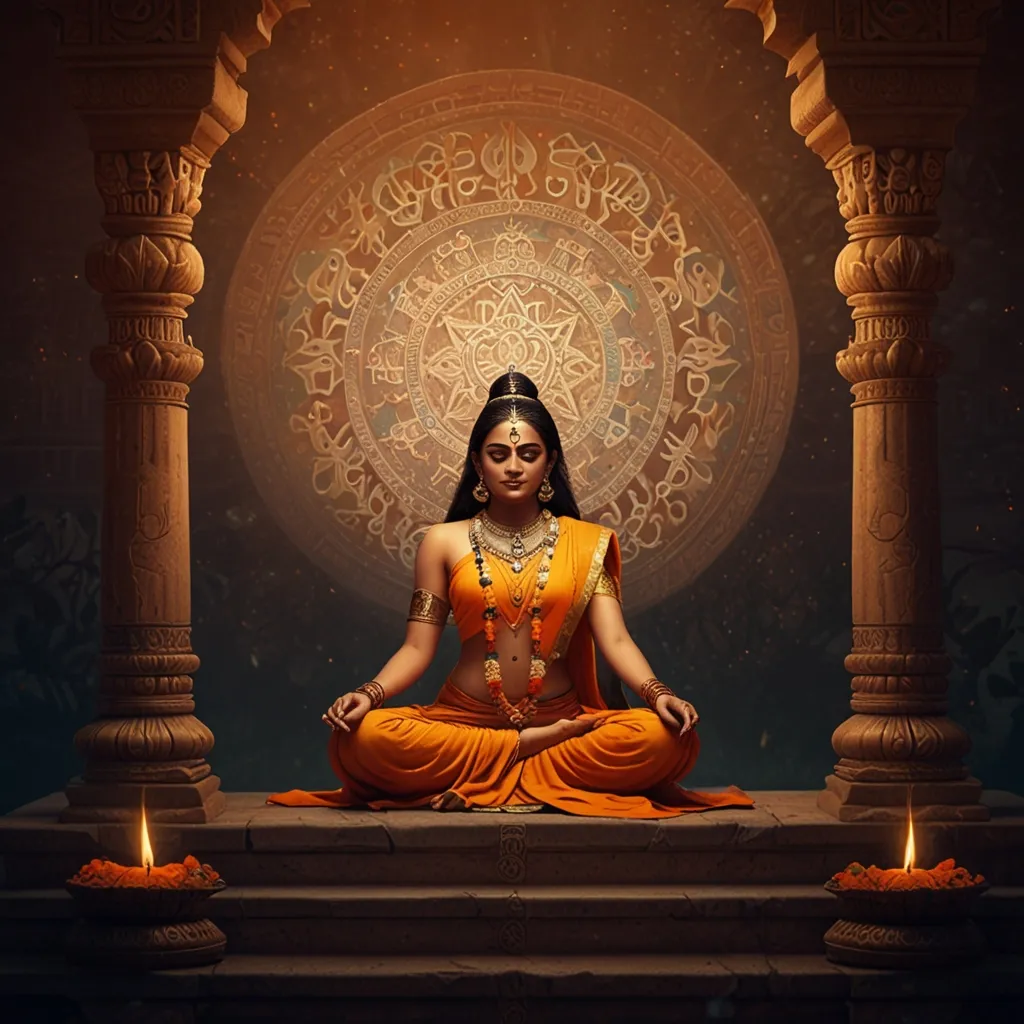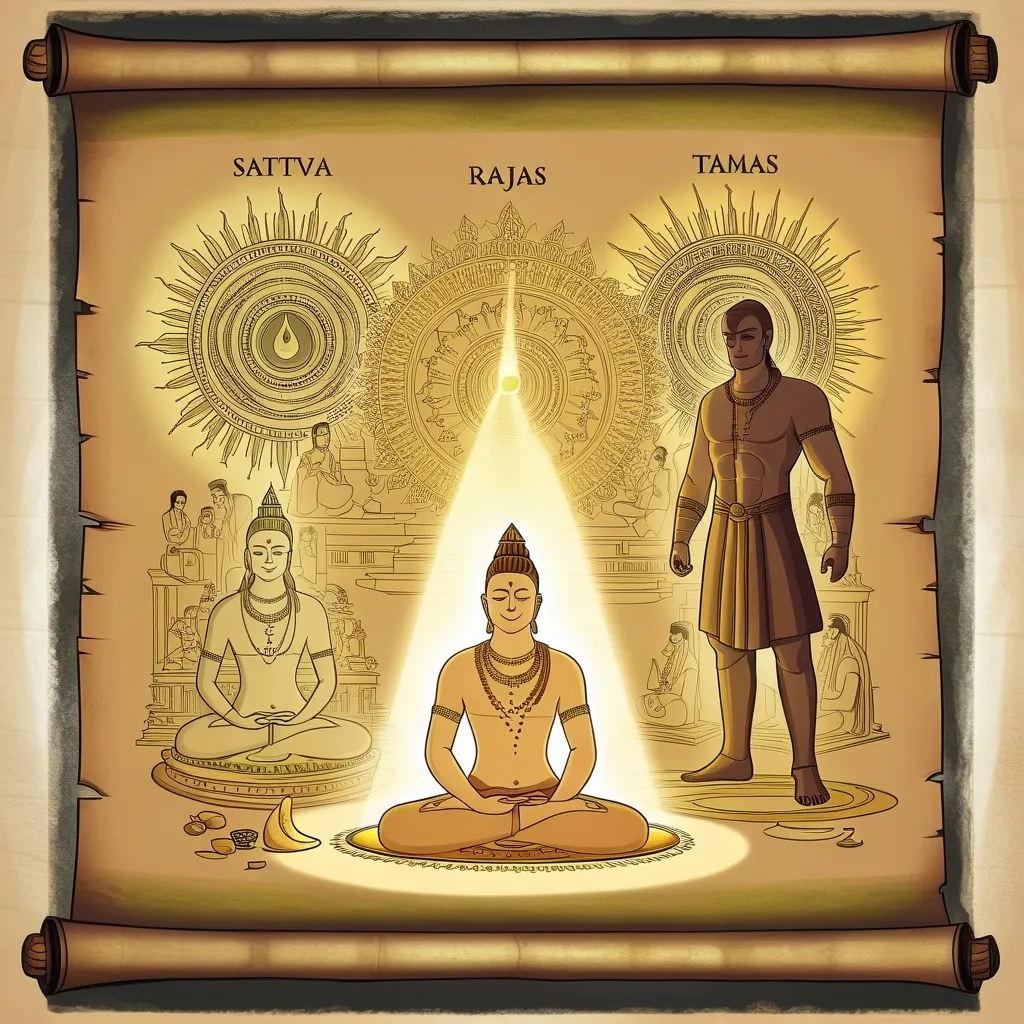In the vast landscape of Hindu scriptures, the Yajurveda stands out as a cornerstone of ritualistic practices, deeply embedded with the musical and melodic essence of Vedic chanting. Picture this ancient text as an old treasure chest, filled with ritual-offering mantras and chants that were the lifeblood of religious ceremonies during the Vedic era, dating back to around 1100-800 BCE.
The Yajurveda, which translates to ‘Worship Knowledge,’ is one of the four main Vedas, rubbing shoulders with the Rigveda, Samaveda, and Atharvaveda. What makes the Yajurveda unique is its rich collection of ritual-offering mantras. These weren’t just any words; they were special incantations chanted by priests during various religious ceremonies, usually around the sacred fire known as yajna. Imagine these chants like magical spells, believed to create a bridge between the earthly and the divine, connecting people with the cosmos.
When it comes to music, the Yajurveda might not hit the high notes like the Samaveda, known for its seven-note scale and complex melodies. Instead, it dances in the realm of a five-note scale — think of it as a melody that sticks to Sa, Ri, Ga, Ma, and Pa. This scale creates a serene and balanced musicality that mirrors the cosmic order and weaves through the five chakras in our body, adding a layer of spiritual significance to the music.
The chants of the Yajurveda are crafted to set a spiritual mood, aiding in meditation and worship. They usually follow a monophonic style, meaning there’s a single melody without any harmony. Simplicity here doesn’t mean plainness, though. The beauty and complexity lie in the precise rendition of notes, known as “svaras.” The rhythm, or “chandas,” follows specific patterns that dictate the length and emphasis of syllables, adding depth to the chants you wouldn’t expect.
Back in Vedic times, chanting was mostly a vocal affair, but they didn’t shy away from using musical instruments to spice things up. The veena, a stringed instrument, was like the rock star of the time and still holds a place of pride in Indian classical music. Imagine a soundtrack featuring the dumdum, a type of drum, and wind instruments like the flute and the conch, giving the chants a richer, more vibrant feel. These performances were more than just recitations; they were spiritual experiences, with the vibrations believed to connect the earthly realm with the divine.
Speaking of oral traditions, the Vedas, including the Yajurveda, have a fascinating system of recitation styles called pathas. This ensures the Vedic mantras are passed down precisely, with all their nuances intact. There are mainly two types of Yajurveda: Krishna Yajurveda and Shukla Yajurveda. The Krishna version is a bit like a mixed bag of verses, while Shukla is more organized and clear.
Vedic chanting doesn’t just use any tones; it employs four primary tones: udātta (middle tone), anudātta (lower tone), svarita (higher tone), and dīrgha svarita (high tone extended). These tones come with intuitive svara marks, which guide the correct recitation of the mantras, believed to have a profound effect on one’s spiritual and mental state.
If you think Indian classical music is mesmerizing, you have the Vedic tradition to thank for its roots. The concepts of raga (melodic framework) and tala (rhythmic cycle) in Indian classical music trace their origins back to the Vedic period. The meticulous attention to pitch, rhythm, and emotional expression found in the Vedas laid the groundwork for what classical musicians expanded into a sophisticated art form.
Fast forward to today, and the Vedic musical tradition, including the Yajurveda, is still alive and kicking. Thanks to festivals, academic conferences, and digital platforms, Vedic music has become more accessible to a global audience. You’ll find these ancient chants in contemporary wellness practices like yoga and meditation, reflecting their timeless relevance. The soothing and harmonizing effects of these chants on the mind and body are widely recognized. They align with natural breathing patterns, helping to reduce stress and anxiety while promoting mental clarity and emotional stability.
Vedic chants can easily find a place in our daily routines. Take the Gayatri Mantra from the Rigveda, often chanted in the morning. It’s known for enhancing concentration, reducing stress, and promoting overall well-being. Another example is the Maha Mrityunjaya Mantra, also from the Rigveda, chanted to remove obstacles and ensure success before starting new ventures.
The spiritual and philosophical foundations of Vedic music, as encapsulated in the Yajurveda, continue to be guiding principles for spiritual practices today. The idea that music serves as a path to the divine remains a cornerstone of Indian classical music and spiritual endeavors. Chanting is not just seen as a form of worship but as a tool for connecting the physical and spiritual worlds.
In conclusion, the Yajurveda, with its rich musical and melodic traditions, holds a vital place in the Vedic heritage. Its chants and melodies, designed to evoke a spiritual atmosphere, continue to inspire and influence modern music and spiritual practices. The precise intonations and rhythms ensure that the spiritual significance of the Yajurveda remains powerful, even as it adapts to contemporary contexts. This ancient text offers a timeless testament to the enduring power of sound in human experience, helping us connect to our spiritual roots and understand the universe more deeply.






